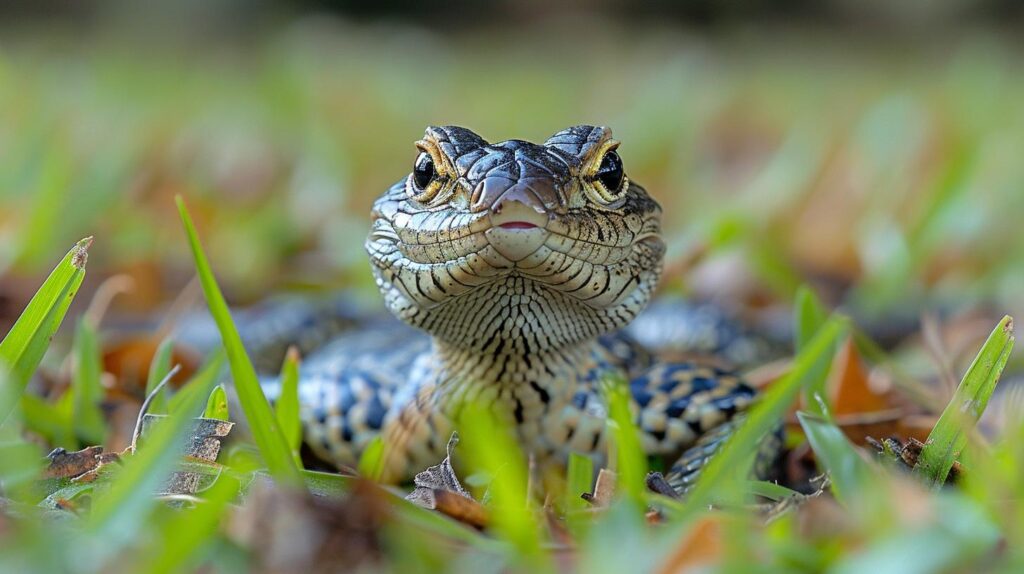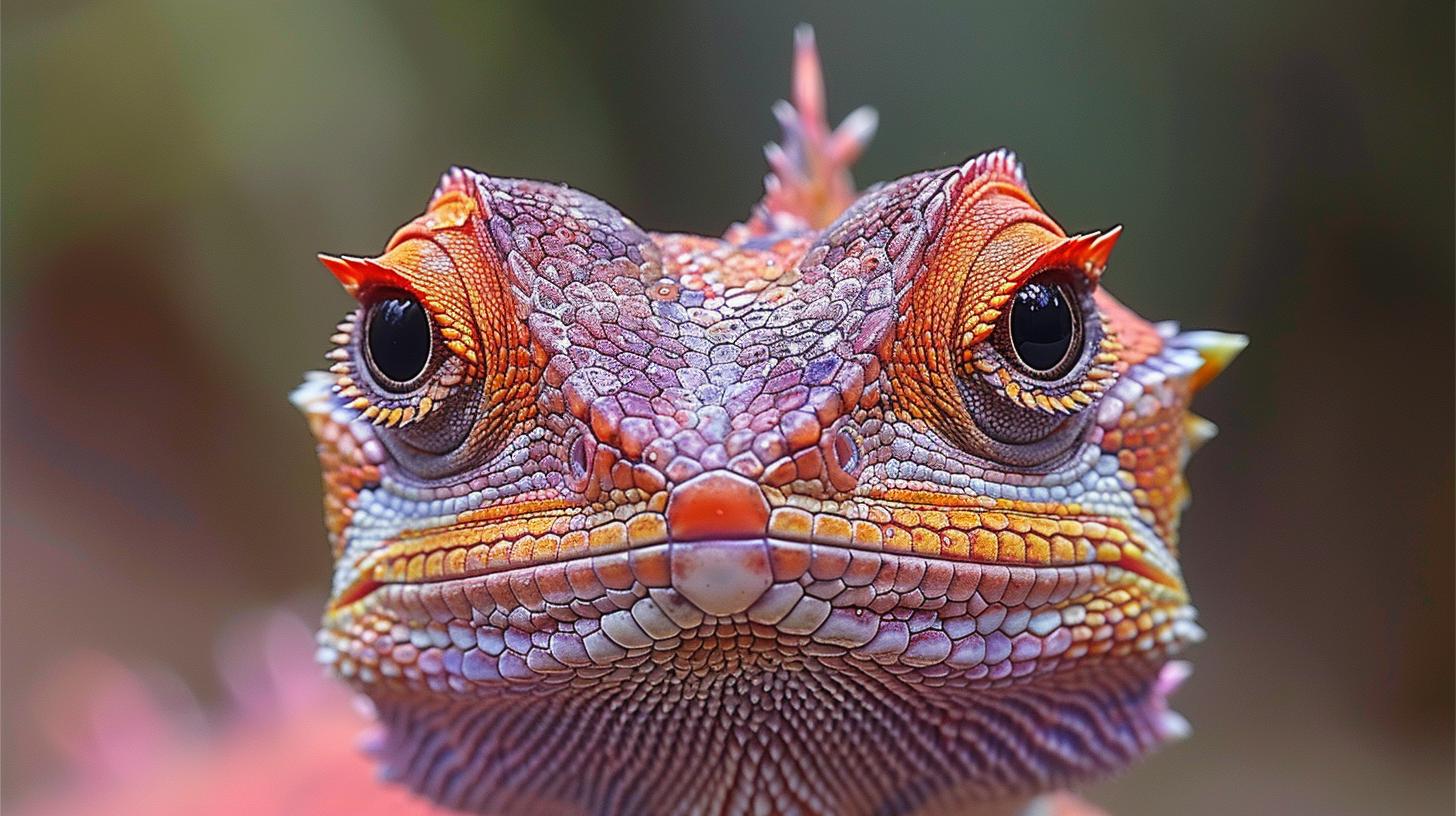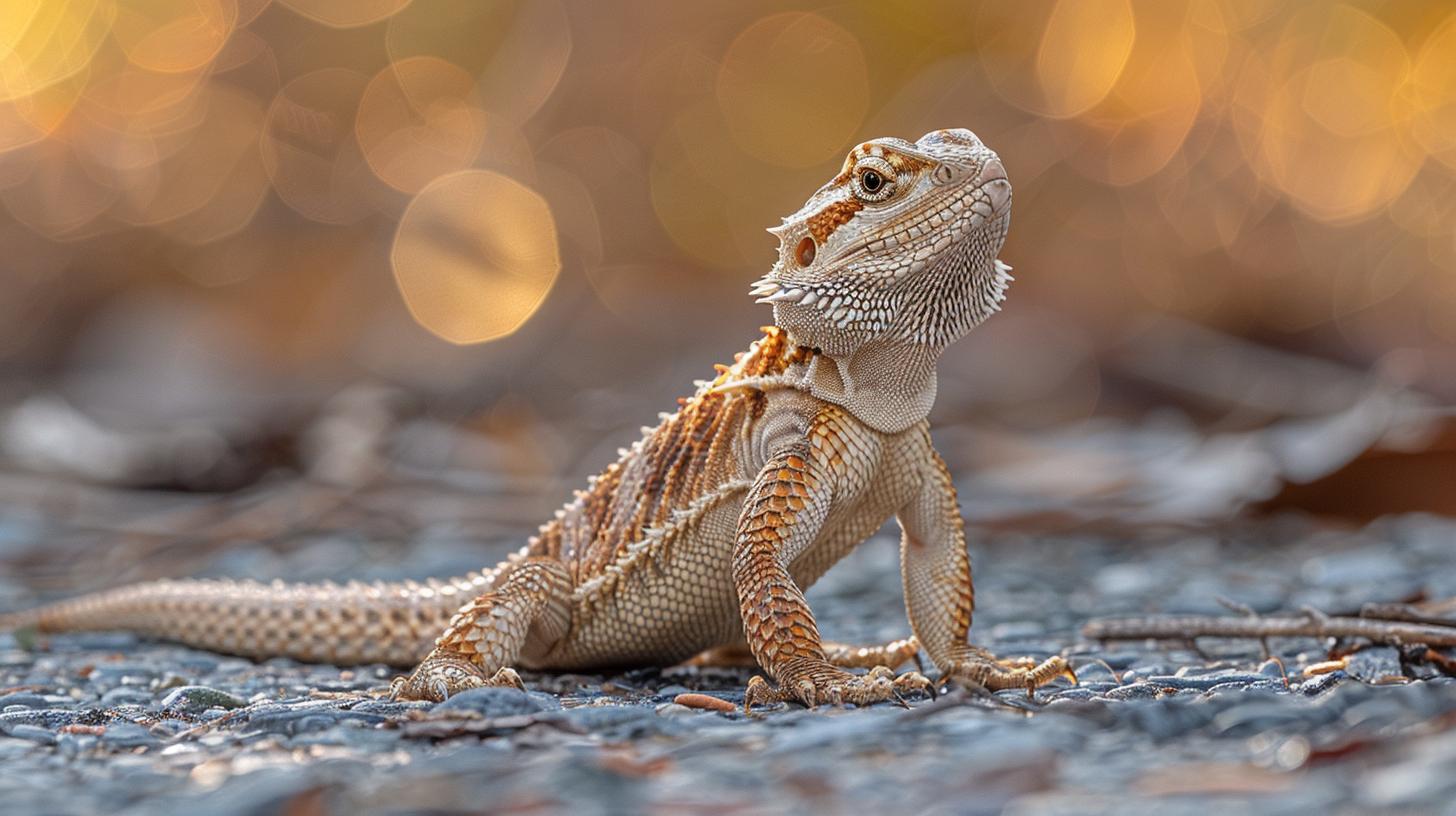Why Is Temperature Regulation Crucial for Reptile Habitats?

Understanding the Basics
Temperature regulation in reptiles is not just a matter of comfort; it's a vital aspect of their survival. Reptiles, being ectothermic organisms, rely heavily on the external environment to regulate their body temperature.
This unique biological function sets them apart and dictates every facet of their day-to-day existence. In this section, we will delve into the basics of how temperature plays an integral role in reptile physiology, emphasizing why maintaining an optimal thermal environment is critical for their health and well-being.
The concept of *temperature regulation* in reptiles is fascinating and complex. Unlike mammals that can generate their own heat internally, reptiles depend on external sources like the sun or shaded areas to warm up or cool down.
This behavior, essential for their survival, influences not only their daily activities but also has a direct impact on physiological processes such as digestion, circulation, and reproduction. Understanding these dynamics is crucial for anyone looking to create a hospitable habitat for these intriguing creatures.
At the heart of reptile wellness is thermoregulation, the mechanism by which they adjust their body temperatures to remain within a certain range conducive to optimal physiological functioning. By engaging in behaviors such as basking under direct sunlight or retreating into cooler shadows, reptiles demonstrate an innate ability to control their body temperature meticulously.
This careful balance supports vital functions from aiding digestion - helping them break down food efficiently - to bolstering circulatory health and promoting robust immune responses. Through exploring the science behind thermoregulation, we uncover the importance of crafting environments that cater substantially to these natural inclinations for warmth and shade.
As we progress further into understanding the essential role that proper temperature regulation holds within reptile habitats, it becomes abundantly clear why meticulous attention to thermal conditions is paramount. The subsequent sections will explore not only the consequences of inadequate environmental control but also practical guidance on establishing ideal living conditions tailored to meet the nuanced needs of these cold-blooded companions.
The Science of Thermoregulation
In the intricate world of reptilian living, *temperature regulation reptiles* rely upon is more than a mere preference; it's a lifeline to their survival. Reptiles are ectothermic creatures, which means their internal temperature is largely governed by their external environment. This symbiotic relationship between the animal and its surroundings necessitates an acute understanding of thermoregulation - the science behind how these creatures maintain their body heat through various behaviors.
Thermoregulation in reptiles manifests in several adaptive behaviors. For instance, you might observe a lizard basking on a sunlit rock during the early morning to absorb heat and stimulate its metabolism for the day ahead. Conversely, to avoid overheating during the highest temperatures of midday, that same lizard might seek refuge under rocks or bury itself in the sand.
These behaviors aren't happenstance but crucial survival strategies allowing reptiles to navigate their thermal landscape. This dance with temperature not only enables them to regulate their body heat but also supports essential physiological processes such as digestion and circulation. Critical for overall health, these mechanisms highlight why maintaining an accurate temperature gradient within captive habitats is non-negotiable.
Crafting an ideal habitat for a pet reptile involves replicating these natural thermal conditions as closely as possible. Equipments like high-quality thermometers and thermostatically controlled heaters become invaluable tools in this quest.
Creating a temperature gradient within the enclosure - offering both cooler shaded areas and designated basking spots directly exposed to heat sources - ensures that captive reptiles can instinctively regulate their body temperature similarly to their wild counterparts. Moreover, understanding these creatures' unique thermal preferences aids enthusiasts and caretakers in designing environments that cater precisely to each species' specific requirements.
| Behavior | Purpose |
|---|---|
| Basking in sunlight | Increases body temperature and aids metabolism |
| Seeking shade or burrowing | Prevents overheating by reducing body temperature |
As we delve further into creating optimal conditions for our scaled friends, it becomes evident that knowledge and attention to detail play pivotal roles in ensuring these fascinating creatures thrive under human care. The science of thermoregulation underscores not just our fascination with these animals but also our responsibility towards them - demonstrating that adequate warmth is more than comfort; it's critical for their wellbeing.
Impact of Improper Temperature on Health
Understanding the pivotal role of *temperature regulation reptiles* play in maintaining their health is essential for any reptile owner. When the habitat's temperature diverges from the ideal range, several health issues can arise, affecting the reptile's overall well-being and lifespan. The effect of improper temperature on a reptile's physiology cannot be overstated; temperature directly influences metabolic rate, immune system performance, and even behavior.
Firstly, at temperatures that are too low for their species-specific needs, reptiles can experience a significant slowdown in metabolism. This metabolic deceleration impacts digestion, resulting in food remaining longer in the stomach, which can lead to fermentation and gastrointestinal distress.
Additionally, a slow metabolism hampers the effectiveness of the immune system making reptiles more susceptible to infections. On the flip side, excessive heat can lead to dehydration and heat stress, which if left unchecked may cause irreversible organ damage or death.
The implications of inadequate temperature regulation extend beyond immediate physical health concerns:
- Reduced longevity: Constant exposure to incorrect temperatures can shorten a reptile's lifespan.
- Behavioral issues: Stress from living in an uncomfortable environment may lead to aggressive behavior or lethargy.
- Breeding problems: Reproduction rates can plummet due to altered body temperatures affecting egg development and hatchling survival.
Creating a habitat that mirrors natural conditions as closely as possible goes a long way in preventing these adverse outcomes. It requires careful planning and regular monitoring but pays off by fostering a healthy ecosystem where your reptile can thrive. Investing in reliable heating equipment and thermometers is non-negotiable for responsible pet ownership within this context.

Maintaining an optimal thermal environment is not solely about setting up heating elements; it's equally vital to establish a *temperature gradient* providing areas where your pet can self-regulate by moving between warmer basking spots and cooler spaces as needed throughout its enclosure. The ability for a reptile to self-regulate its body temperature through behavioral thermoregulation is critical for its physiology and fundamental for preventing temperature-related stress or illness.
Subsequent sections will delve into strategies for designing an effective temperature-controlled habitat that supports happy and healthy reptiles-underlining the importance of ongoing observation and adjustments as part of routine care practices.
Designing the Ideal Habitat
The cornerstone of creating an optimal environment lies in simulating the natural temperature conditions as closely as possible. This involves establishing a balanced thermal gradient within the enclosure-a spectrum of warmth that allows reptiles to navigate between warmer basking areas and cooler zones at will.
Notably, achieving this balance isn't just about setting up heating elements; it's about strategic placement and monitoring to ensure temperatures cater to the reptile's specific needs without causing thermal stress or overheating.
Key Components for Thermal Regulation
Firstly, selecting the right type of heating equipment is paramount. Options range from under-tank heaters and ceramic heat emitters to basking lamps and infrared heat bulbs. Each serves a unique purpose-some providing ambient warmth while others create focused basking spots essential for reptile wellness. However, it's not enough to install these devices; owners must also implement reliable thermometers at various points in the enclosure to accurately gauge temperatures within the thermal gradient.
Creating Effective Temperature Gradients
Beyond equipment selection, placement plays a critical role in forming an effective gradient. For instance, heating sources should be arranged to produce a clear demarcation between warmer and cooler areas without sudden drops in temperature which could harm the inhabitant(s). This setup encourages natural behaviors like thermo-regulation-vital for metabolic processes including digestion and nutrient absorption.
The Role of Lighting
Lastly, it's important not to overlook lighting when discussing thermal considerations. Many types of basking lights offer both heat and vital UV rays (specifically UVA and UVB), supporting bone health through vitamin D synthesis and contributing to overall well-being. Combining proper lighting with temperature control can recreate a more naturalistic setting that enhances a reptile's life quality significantly.
In summary, designing an ideal habitat with optimal temperature considerations is fundamental for any reptile owner desiring to provide their pet with a healthy and enriching life condition indoorser CGIis guides temperature adjustments throughout. The interplay between equipment choice, strategic arrangement for gradient provision, and synergistic light-and-heat setups underscore this process's complexity while highlighting its importance for reptile health maintenance.
The Role of Humidity in Conjunction With Temperature
The interplay between humidity and temperature within a reptile's environment is a delicate dance that requires careful attention and understanding. Reptiles, being ectothermic creatures, rely heavily on the ambient conditions of their habitats to regulate their body functions.
This dynamic duo of humidity and temperature goes hand-in-hand in crafting an environment that is not only conducive for their physiological processes but also mimics their natural habitat as closely as possible. By comprehensively addressing these two critical factors, pet owners can significantly enhance the health and longevity of their reptilian companions.
Understanding Humidity's Role
Humidity - the amount of water vapor in the air - plays a pivotal role in a wide array of a reptile's bodily functions, including hydration, shedding, and respiratory health. For instance, specific species such as tropical reptiles thrive in high humidity environments which assist in keeping their skin moist and facilitate easier shedding processes.
Contrarily, desert dwellers require lower humidity levels to coincide with their natural habitats which they are physiologically adapted to. Adjusting humidity levels to mimic these conditions in captivity is paramount for avoiding health issues like dysecdysis (abnormal shedding) or dehydration.
Creating Synergy With Temperature
It's not just about maintaining the right levels of humidity; it's about creating a harmonious balance with temperature settings within your reptile's enclosure. The concept of temperature regulation reptiles depend on must be complemented by appropriate humidity levels to simulate real-world conditions effectively. Reptiles regulate their body temperature through behavioral thermoregulation - moving between areas of different temperatures within their environment.
Similarly, they need varying levels of humidity across the same gradient to fully meet their physiological needs. Creating basking spots with higher temperatures coupled with areas possessing ample moisture offers an ideal setup for promoting natural behavior in captive reptiles.
Maintaining Optimal Conditions
Achieving this delicate balance requires not just understanding but continuous observation and adjustment based on your reptile's behavior and condition changes. Utilizing tools like hygrometers for monitoring humidity levels alongside thermometers ensures you provide an accurate depiction of your pet's natural surroundings. It's important to note that over-saturating your pet's habitat can lead to issues such as bacterial or fungal infections while too dry conditions may cause dehydration or impaction.

By carefully controlling both the temperature and the humidity within your reptile's habitat, you create an enabling environment that significantly contributes towards positively impacting its overall well-being. This meticulous approach fosters an ecosystem where these unique pets can thrive, showcasing behaviors indicative of good health and vitality seen in their wild counterparts.
Case Studies
In the intricate world of herpetoculture, mastering the art of temperature regulation within reptile habitats is both a science and an art. By bringing real-life examples to the forefront, we gain invaluable insights into how seasoned reptile owners and experts have navigated the challenges associated with achieving optimal thermal conditions for their cold-blooded companions.
One case that stands out involves a terrarium set up for a breed of tropical geckos known for their sensitivity to temperature fluctuations. The owner meticulously designed a habitat equipped with both heating pads and ceramic heat emitters, strategically placed at one end of the enclosure to create a gradient of warmth.
This setup allowed the geckos to thermoregulate by moving between warmer and cooler areas as needed, effectively mimicking their natural environment. What makes this case particularly noteworthy is the integration of digital thermometers at various points within the terrarium to monitor temperature levels closely, ensuring they remained within the precise range required for these reptiles' health and well-being.
Another compelling example comes from a community-led conservation project aimed at rehabilitating injured desert tortoises before releasing them back into their natural habitat. Given their exposure to drastic temperature changes in the wild, maintaining an enclosure that could mimic these conditions was paramount.
The solution was an outdoor pen with shaded areas, UVB light sources for basking, and cooling zones provided by evaporative coolers. Regular health checks demonstrated significant improvements in the tortoises' physical condition and behavior, underscoring the critical role temperature regulation reptiles play in recovery processes.
- Implement energy-efficient heaters
- Ensure ample shading choices
- Regularly adjust temperatures according to seasonal variations
These cases not only showcase practical solutions to complex temperature management challenges but also emphasize the importance of observational skills and adaptability among caretakers. They highlight how ongoing adjustments and refinements based on each species' unique needs are central to successful temperature regulation reptiles efforts.
Engaging deeply with these narratives opens up broader discussions around innovative technology use in habitat design, community engagement in conservation efforts, and advanced monitoring tools. As this section unfolds further stories related to effective temperature regulation strategies employed across different scenarios will be explored, aiming to inspire and guide current and future reptile enthusiasts in creating safe, comfortable environments for their scale-clad friends.
Keeping Up With Changing Needs
As we culminate our exploration on why temperature regulation is pivotal for reptile habitats, it's clear that the harmony of a reptile's environment with its physiological needs is not merely beneficial but essential for its survival and thriving. The journey from understanding the cold-blooded essence of these fascinating creatures to grasping the intricate science of thermoregulation unfolds a narrative that is rich in both complexity and simplicity.
It reaffirms that temperature regulation in reptiles is not just a preference but a necessity, intricately linked to their health, behavior, and ultimately, their survival.
The synthesis of insights from various sections reveals the delicate balance required in designing the ideal habitat, underscoring the need for meticulous attention to temperature gradients and the symbiotic relationship between temperature and humidity. This balance is not static; it demands vigilance and adaptability from reptile caretakers as seasons change and as their scaled companions grow.
The shared experiences and case studies highlight not just the challenges involved but also celebrate the triumph of creating habitats that mirror natural environments-an endeavor that fosters wellness and vitality in these enigmatic beings.
In light of this knowledge, we encourage our readers to engage further with our content library, rich with articles aimed at empowering you with information on creating optimal environments for your pets. Whether you're a seasoned reptile enthusiast or newly embarked on this rewarding journey, there's always more to learn about the nuanced art of habitat design.
Dive into our resources for more insights and guidance on nurturing your reptilian friends in ways that resonate with their intrinsic needs. Your commitment to understanding temperature regulation can transform lives-yours and theirs.
Frequently Asked Questions
How Do Reptiles Regulate Body Temperature?
Reptiles regulate their body temperature through a process known as thermoregulation, which involves moving between sunny and shaded areas or burrowing into cooler ground. Unlike mammals that generate heat internally, reptiles rely on external sources like the sun to warm up and shaded areas to cool down.
What Type of Thermoregulation Is Found in Reptiles?
Ectothermy is the type of thermoregulation found in reptiles. This means they depend on environmental heat sources to manage their body temperature instead of producing significant amounts of internal body heat as mammals and birds do.
What Are the Three Methods That a Reptile Uses to Control Its Body Temperature?
Reptiles use three primary methods to control their body temperature: basking in the sun to absorb heat, seeking shade or burrowing to avoid overheating, and altering blood flow to either retain or dissipate heat more effectively depending on their needs.
What Temperature Is Too Hot for Reptiles?
Temperatures exceeding 95°F (35°C) can become too hot for most reptiles, potentially leading to overheating or hyperthermia. However, the exact threshold varies among species, with some desert-adapted reptiles tolerating higher temperatures.
Why Can't Reptiles Regulate Body Temperature?
Reptiles can't regulate body temperature internally because they are ectotherms; their internal physiological mechanisms do not produce enough heat to significantly affect their body temperature. Instead, they rely on environmental temperatures and behaviors such as basking and seeking shade.
Why Can't Reptiles Thermoregulate?
The inability of reptiles to thermoregulate internally lies in their ectothermic nature. They lack the physiological adaptations found in endothermic animals (mammals and birds) that allow for internal generation and regulation of body heat, making them reliant on external sources for temperature regulation.
Leave a Reply
You must be logged in to post a comment.